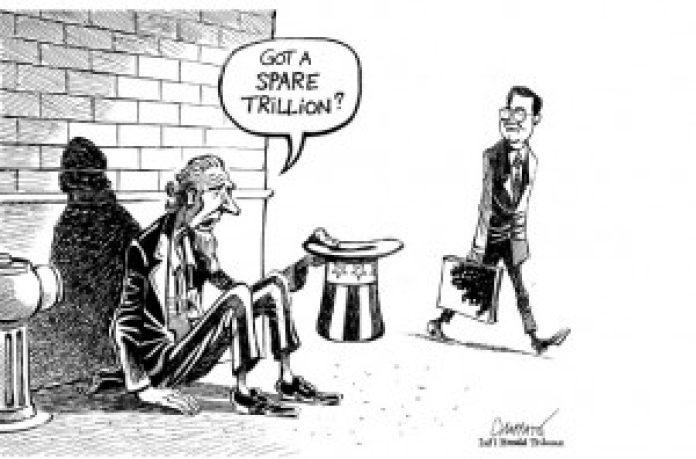What happens about the debt ceiling is a charade, where negotiations always end up always raising the debt ceiling, huge amounts of new federal debt are incurred, and federal spending continues in an upward spiral
Three lies about paying off US debt
First, the Republicans want austerity
When Washington politicians use the word “cut,” they are usually talking about small cuts in the rate of increase in spending; If, say, Pentagon spending increases by 2 percent annually (which is indeed the average over the past decade), next year’s increase of 1.5 percent will be denounced by some as a “cutback.” But the reality – according to the institute – is that it is not a reduction in spending but rather a decrease in the rate of increase, but in the minds of policy makers in Washington, taxpayers’ money is their right, so any slowdown in the flow of free money is described as a “cut.”
Instead, Republicans are seeking a slight cut in spending from the Congressional Budget Office’s 2023 estimate of $6.4 trillion to just below 2022 spending of $6.27 trillion. In addition, they want to fix the rate of increase in spending by 1 percent as a maximum, which is the percentage that will not be binding on any future US administrations, if approved. As it can be skipped under several names.
Second: The United States has never defaulted on its debt
guarantee that Washington will not default on any of its debts; It is an outright lie; Many US states defaulted on their debts.
This began in the aftermath of the American Revolution when the United States defaulted on domestic loans. After the new Constitution was established in 1790, the federal government renegotiated the earlier debts on terms less favorable to investors, and then there was the dollar default of 1862. The larger case was the Liberty Bond default in 1934, when the United States was contractually bound By paying off its debt on these bonds with gold, Franklin D. Roosevelt decided to default on the entire domestic debt by refusing to redeem the gold for the Americans and devaluing the dollar by 40 percent against foreign exchange.
Jason Zweig, an economics writer, was quoted as saying that “in April and May 1979, amid computer malfunctions, intense demand from small investors, and in the wake of Congressional debate on raising the debt ceiling, the United States failed to make timely payments on about $122 million in Treasury securities.” “.
Third: Default is the economic end of the world
Any talk of default would bring predictions of economic devastation, as soon as signs of trouble appear in the economy, the “experts” of the system line up to tell us that unless the government is enabled to spend…. endlessly on bailouts and “motivation”; The economy will collapse, unemployment will rise, and hell on earth will ensue, which was said a lot during the global financial crisis in 2008, for example.
that these are the same scare tactics the regime uses every time it wants a new round of bailouts or a massive amount of new spending; Trump said the same thing hysterically when he demanded passage of the $2.2 trillion Covid “rescue plan.”
It is time to start questioning this narrative and to demand that the federal government start being more honest about its runaway and unpayable debts; Today’s huge federal debt is unpayable, unmanageable even because as interest rates go up, the debt service swells.
that the only strategy the federal government has for dealing with this is to inflate dollars with easy money in order to bring interest rates back down and pay down debt in lower dollars; Paying off debt in discounted dollars is a form of default, but it helps hide the truth.
The most honest and rational approach would be to default outright, rather than dishonestly inflate debt obligations, since the federal government should simply admit that it can pay its debts only at a reduced amount: say, 90 cents on the dollar, or less. Of course, this will lead to higher interest rates as it did in the past when the US defaulted on its debt, but this will bring the process of bringing interest rates more in line with the real risks that come with investing in government debt.
In conclusion
The political status quo is built on protecting investors from risk rather than on taxpayers who eventually pay all the bills, and this way of turning debt into inflation is attractive to governments and empowered on Wall Street because it shifts the burden of unbridled spending to ordinary savers and consumers, who pay the true price of default. about inflationary repayments, so when experts who oppose any kind of outright default insist that default would bring disaster, what they really mean is that it would bring
A disaster for their friends on Wall Street and in government.





















كل 10 او 20 سنة بيعملو ذات الأسلوب !!